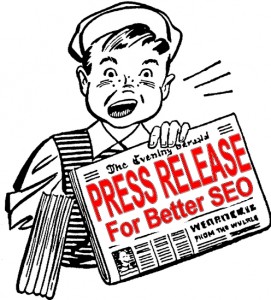By Danielle Cobb, Communications Coordinator
Every couple of years the press release is declared dead. Yet the thousands of press releases issued over newswires each and every day are proof that its obituary hasn’t been written yet. Companies don’t need to issue press releases to get media coverage, but doing so has its benefits:
- Establishing credibility
- Showing business momentum
- Search engine optimization
- For public companies, communicating valuable information to shareholders
Press releases get a bum rap because some companies issue them to announce trivial things like new websites, minor upgrades to products, and other things that frankly, no one cares about. That said, if your company has important news to share, the press release is still the best vehicle to get the word out.
Your press release is a direct reflection of your brand. You don’t want it lining your media contacts’ trashcan, do you? Are you making press release writing mistakes that you don’t even know about?
Here are four press release best practices:
Give Your Headline Some Sizzle
I hate to say it, but most press release headlines are boring. This is your opportunity to bring the reader into your world. Don’t squander it! It’s a cutthroat world out there and the headline might be the reason someone decides to give your story a chance…or look the other way. Powerful adjectives and active verbs are a great start for eye-catching headlines.
As a rule, the headline should be simple and short so people (and search engines) don’t get lost. Clear language is essential, and avoid jargon at all costs. Make it interesting and always consider the WIIFM (What’s in it for me?).
Take the Lead
It’s a best practice to write press releases in the “inverted pyramid” style. That’s why the lead is so important. It’s the first thing people see (after the headline, of course), so the most important details should come first. Also, it should be engaging enough to capture the reader’s attention.
Creativity is key here. How many times have you heard a boring, static lead that reads, “Today, company X is excited to announce…?” And that’s supposed to be enticing? Think again!
After you’ve written your standout lead, the first paragraph should cover all the bases – the 5 W’s: who, what, when, where and why.
It’s All About the Verb, Baby!
Press releases are different from an article in that you aren’t trying to paint a picture, but rather give a piece of news with all the facts. You need to be clear and concise, but also keep it interesting. A good way to do that is to use active rather than passive voice. There’s a big difference between “Molly ate the pizza” and “the pizza was eaten by Molly.” An active voice is more engaging and brings your verbs to life.
Another important element to consider is “person.” Person shows who or what does the action. Never use the second person, “you.” Always write in the third person. (i.e, “the reader,” “the buyer,” etc.)
Let Your Creativity Flow with Quotes
 Just because a press release provides serious facts doesn’t mean you can’t get creative with it. Every press release needs a bit of excitement, and quotes are a great way to add some color. A best practice for quotes is to limit them to two – three sentences. They should also be written more colloquially than the rest of the press release. Here is the standard format for quotes:
Just because a press release provides serious facts doesn’t mean you can’t get creative with it. Every press release needs a bit of excitement, and quotes are a great way to add some color. A best practice for quotes is to limit them to two – three sentences. They should also be written more colloquially than the rest of the press release. Here is the standard format for quotes:
“This is the first sentence of my quote that should introduce the big picture idea,” said Danielle Cobb, communications coordinator, (W)right On Communications. “The second sentence validates the first sentence of the quote. The third sentence can provide supporting facts or an emotional appeal to back up the big idea from the first sentence.” Finally, keep in mind that the punctuation should always be placed inside the quotation marks.
These are just some of the guidelines we follow when drafting press releases. If you have any other best practices, give us a shout in the comments below!











 Grant Wright
Grant Wright Corie Fiebiger
Corie Fiebiger
 Shae Geary
Shae Geary Phelan Riessen
Phelan Riessen Katrina Early
Katrina Early Hamish Marshall
Hamish Marshall